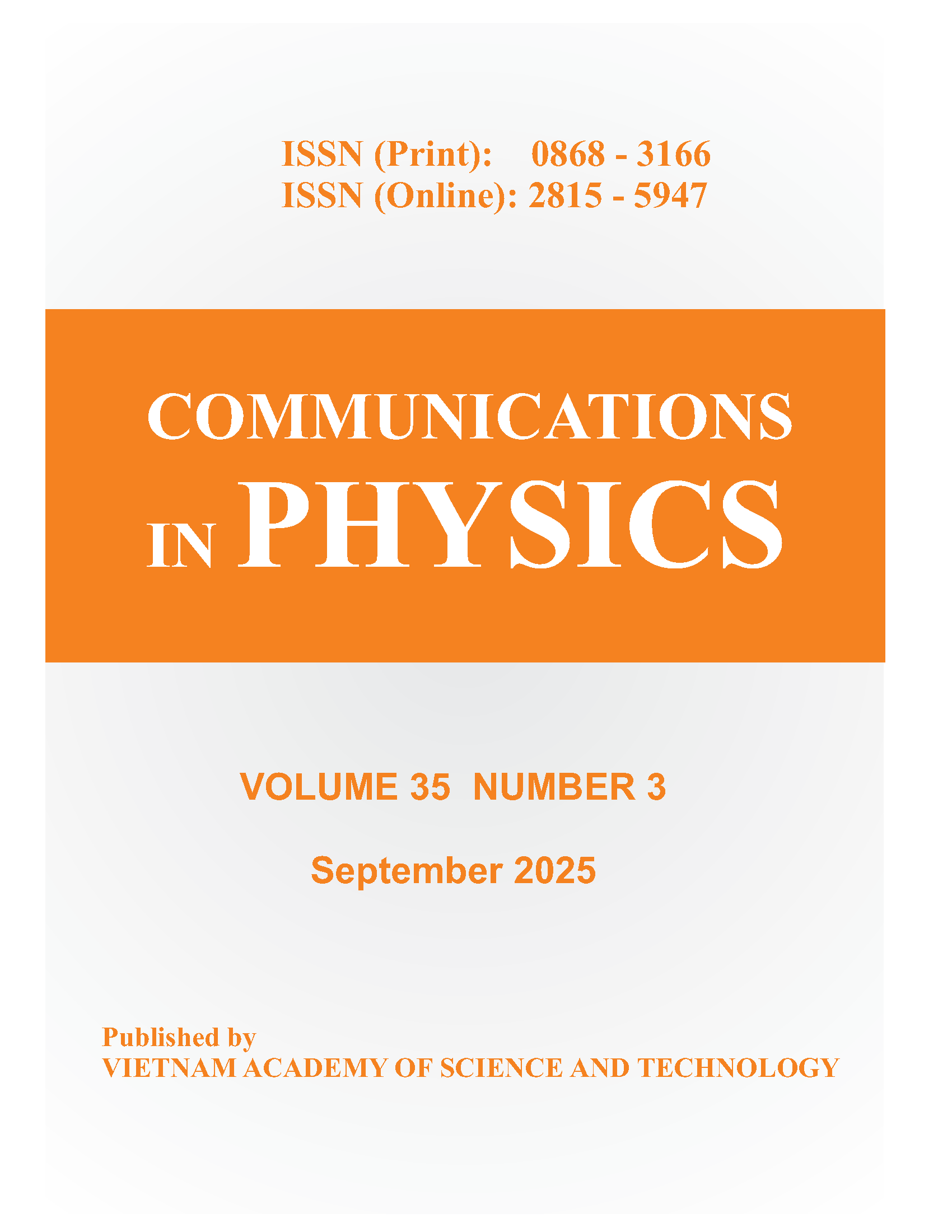A First Principles Study on Electronic and Magnetic Properties of Defects in ZnO/GaN Core-shell Nanowire Heterostructures
Author affiliations
DOI:
https://doi.org/10.15625/0868-3166/24/3S1/5463Keywords:
density functional theory, \(d^{0}\)-ferromagnetism, heterostucture interface, core/shell nanowiresAbstract
To date semiconductor nanowire (NW) heterostructures (HS) have attracted extensive attention as important components of electronic and optoelectronic nanodevices. Further NWs also show promising potency to enhance the solar energy harvesting, e.g. improving both light trapping, photo-carrier collection, and contacting surface area. In this work we show theoretically that the \(d^{0}\)-ferromagnetism and NW HS bandgap can be turned by engineering the HS interfaces in non-magnetic ZnO/GaN core/shell NW HS. In that NW HS the incorporation of one compound into the other leads to the bandgap narrowing in the nonisovalent alloy because of the type II band alignment betwwen ZnO and GaN. The \(d^{0}\)-ferromagnetic interface can be developed by creating \(p\)-type defect with \(N\) and/or \(n\)-type defect with Zn in Ga--O interface bonds due to the defect-induced polar discontinuity. It's noted that the GaN/ZnO NW HS itself without defect or with same number defects of both types are not ferromagnetic. So that the induced magnetic moment is suggested to be related to the missing charge introduced at these defects. In our study we focused on the effects of GaN/ZnO interfaces on the electronic and magnetic properties, e.g. interface states within the bandgap and interface-induced ferromagnetism and impact of surface reconstruction and quantum confinement. The origin of this \(d^{0}\)-FM is revealed by analyses of spin-polarized bandstructure indicated by the asymmetrical spin-up and spin-down states near the Fermi level, the projected densities of states (PDOSs) and the spin-polarized mulliken charge differences, indicated that most spin-polarized states are dominated by the interface defect site N$p$ electrons. The calculated GaN/ZnO interface magnetism, have been compared with FM at the LaAlO\(-SrTiO\(_{3}\) interface which are theoretically predicted [30] and experimentally confirmed [31], where the magnetic moments also arise from the polar discontinuity.Downloads
Downloads
Published
How to Cite
Issue
Section
License
Communications in Physics is licensed under a Creative Commons Attribution-ShareAlike 4.0 International License.
Copyright on any research article published in Communications in Physics is retained by the respective author(s), without restrictions. Authors grant VAST Journals System (VJS) a license to publish the article and identify itself as the original publisher. Upon author(s) by giving permission to Communications in Physics either via Communications in Physics portal or other channel to publish their research work in Communications in Physics agrees to all the terms and conditions of https://creativecommons.org/licenses/by-sa/4.0/ License and terms & condition set by VJS.











